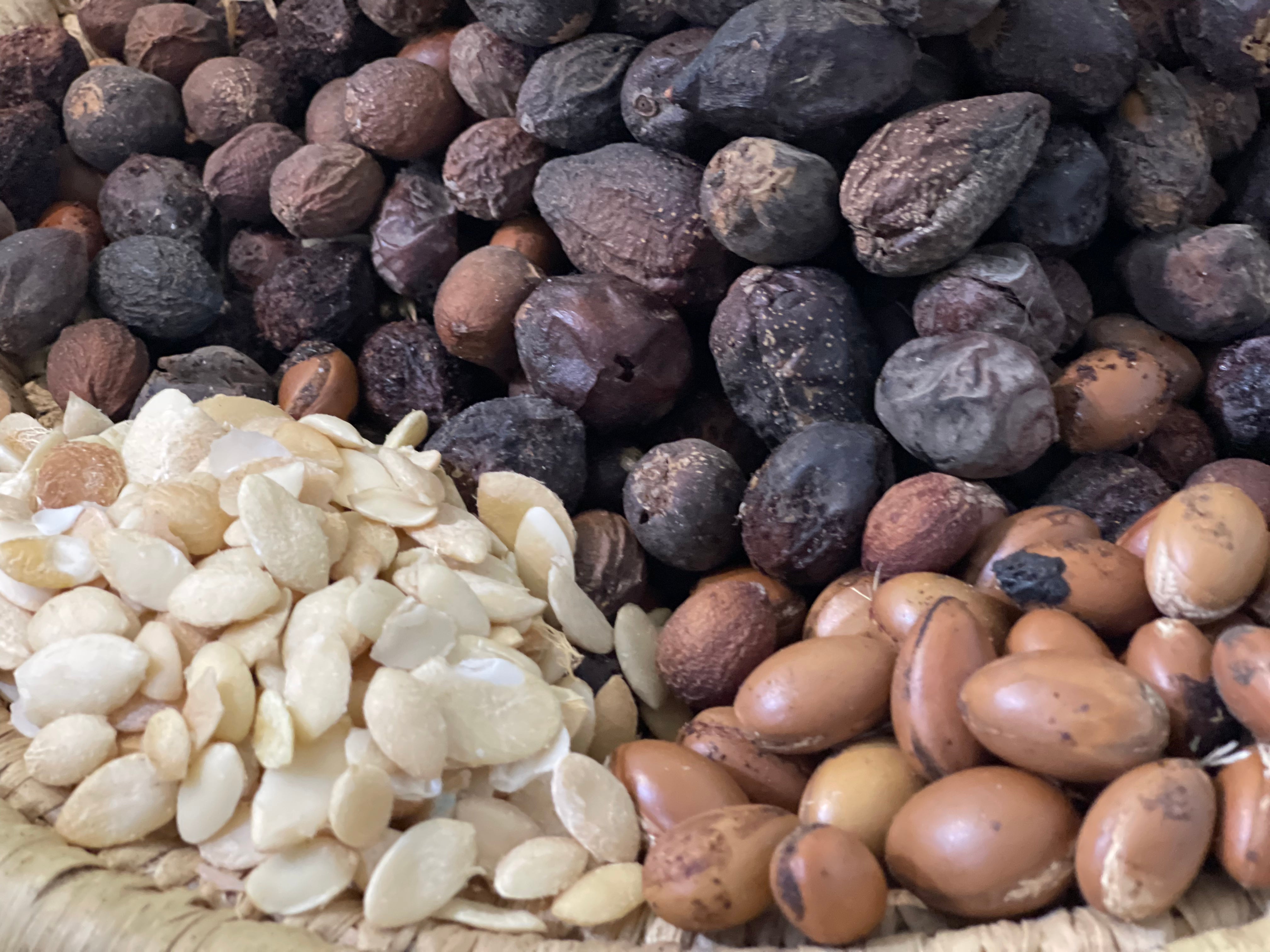The Beauty Elixir that Empowers Women
Nestled in the hills west of Marrakech, you will find one of the most bountiful natural resources of my homeland of Morocco, the argan tree. From its yellow-green leaves and thorny branches, a yellow flower blooms in spring that will take its own sweet time to ripen over the course of a year before finally dropping a small ovoid fruit that yields so many health and beauty benefits to the world. Most miraculously, this small fruit has transformed the lives of Moroccan women over the years.
It’s no surprise that Moroccan Berbers recognized the health and beauty benefits of argan oil centuries ago as Moroccan women are healers by nature. Through the history of argan oil, these women have played a critical role in the production of this highly sought after elixir. However, only recently have they starting to receive recognition for their craftsmanship and ingenuity.
The production of argan oil has already become mythic with tales of singing Berber women and goats in trees. The reality is that the development of this wondrous oil involves deliberate, time-tested methods (made more hygienic with recent developments but still labor intensive) that are blend of tradition and innovation by the women who have long been producing argan oil for their family’s use.
According to stories passed down through the generations, the story of argan oil begins with the industrious squirrels of southwestern Morocco. The squirrels loved the argan nuts and when they dropped from the trees, they would fetch them and bury them all over - and frequently forget where they had buried them so argan trees would proliferate throughout the region. (According to a study done at the University of Richmond, squirrels fail to recover up to an astonishing 74% of the nuts they bury.)
The benefits of argan oil are wide-ranging and undisputed. Used centuries ago for its luminescent properties as lamp oil, Moroccan women quickly recognized it’s richness as a skin-saving salve for the dry desert climate. Masters of innovation, these woman engineered many uses of this near-magic liquid starting with a nutty cooking oil. As they were cooking with with their hands to separate the argan cooking oil from the argan paste, they started to notice over time how youthful their hands looked compared to their faces. They started using it on their face and began to recognize not only it’s anti-aging properties but also how miraculous argan oil was for skin care. It turned out to be a powerful natural healing ointment for wounds, burns and infections, as well as a completely organic anti-aging treatment with an ability to soothe a myriad of skin conditions ranging from acne to psoriasis and dermatitis.
Extracting the oil involves a specific set of steps, repeated in careful detail over time by the Berber woman. First, there is waiting for the fruit to drop from the tree - something that women are historically more adept at. This patience is an important part of the process as it is accepted belief that when the fruit is artificially separated from the tree by shaking it, it will increase the acid in the oil and render it inferior. Once the fruit is ready and drops of its own accord, it must be cracked by hand - again, artificial methods of breaking the hard fruit nut can damage the quality of the oil. Even today, visitors to Morocco can see women in the villages cracking the nuts with a stone mill, the traditional method of oil extraction from the cracked nut. However, a modern method of using a commercial cold-pressing extractor to carefully apply pressure without heat is also acceptable now and will preserve the oil’s nutrients.
These early feminine pioneers and argan oil champions were wise to take ownership of its production. Once produced at home through painstaking methods, the women have owned the historic knowledge of this labor-intensive method which led to the creation of the first “cooperative” of all-women artisans in 1996.
While not easy work, the oil extraction process itself requires few specialized skills or non-ordinary tools, making it simple for a woman to enter a cooperative at the age of 18 and begin to generate some income for herself. Over the last few decades, with more cultural approval for a woman’s ability to work in a cooperative outside the home, there have also been more opportunities for women to play a role in securing the fruit for production and even in selling the product internationally.
The recent interest in female artisans who bring argan oil to the world has yielded many positive benefits for the women of Morocco. However, Western fascination with the fruits of the argan tree hasn’t been all positive. Along the way, the goats of Morocco, who enjoy the argan fruit and will sometimes jump around the trees searching for it, has caused a sensation amongst tourists, who delight in in the sight of “goats in trees.” Sadly, this has created a willingness among locals to force goats into the trees for the tourists, sometimes even resorting to barbaric and abusive practices like chaining the goats to trees just to keep them there to “perform” for the crowds. As a lifelong animal-lover, this angers and saddens me and I strongly encourage visitors to Morocco to stay far away from these tourist traps and hopefully, over time, the awareness of this abuse will discourage people from supporting these practices.
However, I do encourage you to find ways to support the women-owned cooperatives of southwestern Morocco by seeking out the refined argan oil that they proudly produce for the world. The beauty this miracle elixir brings to your skin, your body and your soul will be its own reward.





